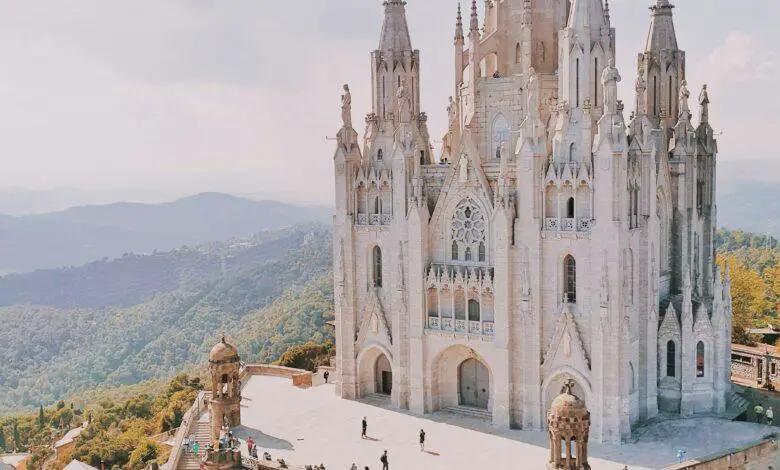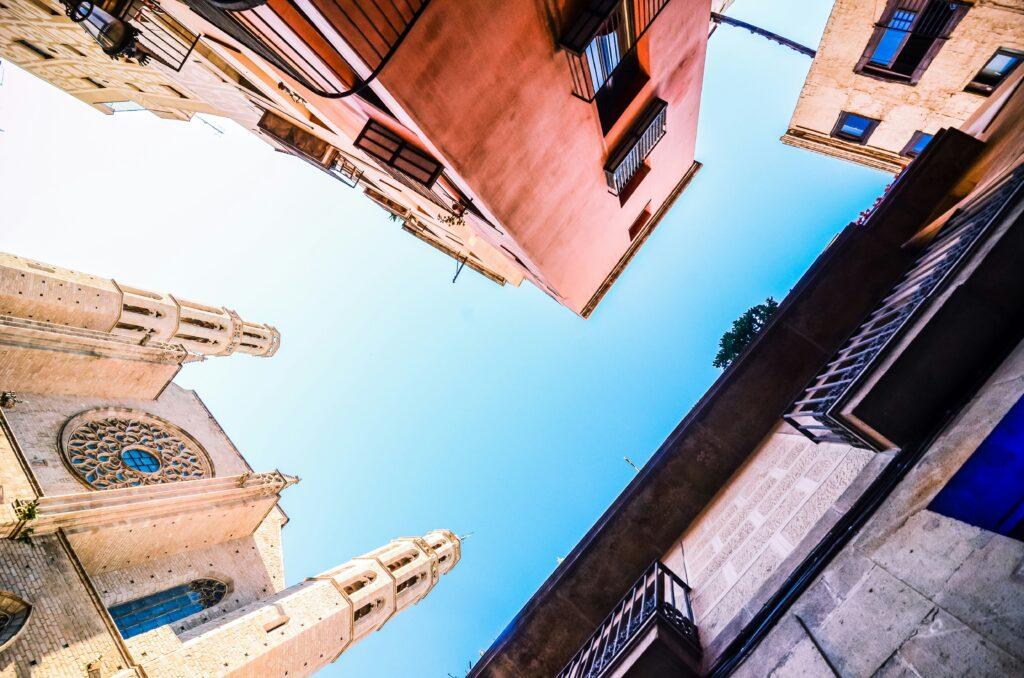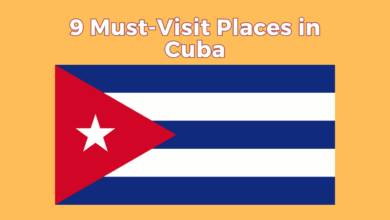🇪🇸 Spanish Fiesta: 💃 Flamenco and 🍽️ Tapas in Barcelona
Dive into the Essence of Barcelona's Flamenco and Tapas Scene

Barcelona, the vibrant capital of Catalonia, is renowned for its rich culture, delicious cuisine, and passionate dances. Among its many attractions, experiencing a Spanish fiesta, complete with flamenco performances and savory tapas, is an absolute must. In this blog post, we’ll delve into the heart of Barcelona’s flamenco and tapas scene, exploring the essence of this quintessential Spanish experience.
Flamenco: The Soulful Rhythm of Spain
History and Origins
Flamenco, the vibrant and passionate dance form synonymous with Spanish culture, has a rich and fascinating history that dates back centuries. Its origins are deeply rooted in the diverse cultural heritage of Spain, blending influences from the Romani people, Moors, Jews, and indigenous Andalusians. The exact beginnings of flamenco are somewhat shrouded in mystery, as it emerged organically from the marginalized communities of Andalusia, particularly in the regions of Cadiz, Seville, and Jerez.
The music and dance styles that eventually coalesced into flamenco were born out of the struggles, joys, and sorrows of these marginalized groups, serving as a form of emotional expression and cultural identity. Over time, flamenco evolved, incorporating elements of Andalusian folk music, Arab and Moorish melodies, and the improvisational spirit of Romani music.
Characteristics of Flamenco
Flamenco is characterized by its intense emotional expression, rhythmic complexity, and virtuosic improvisation. At its core are three primary elements: cante (song), baile (dance), and toque (guitar playing), each of which plays a vital role in conveying the depth and complexity of flamenco’s emotions.
The cante, or singing, is perhaps the most essential element of flamenco, serving as the focal point around which the dance and guitar revolve. The lyrics often explore themes of love, longing, heartache, and the struggles of everyday life, delivered with raw emotion and sincerity.
In flamenco dance, the performers use precise footwork, intricate hand movements, and dramatic gestures to interpret the music and express the lyrics’ sentiment. The movements are often characterized by their grace, power, and sensuality, with dancers conveying a wide range of emotions through their performance.
The toque, or guitar playing, provides the rhythmic and harmonic framework for flamenco, supporting both the singing and dancing with its intricate melodies and driving rhythms. Flamenco guitarists are revered for their technical skill and ability to evoke a wide range of emotions through their playing, seamlessly intertwining with the vocals and dance to create a truly mesmerizing experience.
Where to Experience Flamenco in Barcelona
Barcelona, the vibrant capital of Catalonia, offers numerous opportunities to experience the magic of flamenco. While not traditionally considered a stronghold of flamenco like Andalusia, Barcelona boasts several venues where visitors can enjoy authentic performances by talented artists.
One such venue is Tablao Flamenco Cordobes, located in the heart of Barcelona’s historic Las Ramblas district. This renowned tablao has been showcasing flamenco since 1970, featuring top artists who deliver passionate and electrifying performances every night.
Another option is Palacio del Flamenco, situated in a beautifully restored theater near Barcelona’s bustling Eixample neighborhood. Here, guests can enjoy an immersive flamenco experience featuring live music, dance, and singing, accompanied by a delicious dinner of traditional Spanish cuisine.
For those seeking a more intimate setting, Casa Lola Flamenco is a cozy venue in the Gothic Quarter known for its authentic and soulful performances. With its warm atmosphere and talented performers, Casa Lola offers visitors a chance to immerse themselves in the captivating world of flamenco while enjoying delicious tapas and drinks.
Whether you’re a seasoned aficionado or experiencing flamenco for the first time, Barcelona provides the perfect backdrop for discovering the soulful rhythm of Spain. With its vibrant cultural scene and passionate performers, a night of flamenco in Barcelona is an experience not to be missed.
Tapas: A Culinary Journey Through Spanish Delights
Origins of Tapas Culture
The tradition of tapas is deeply ingrained in Spanish culinary culture, with its origins dating back centuries. The word “tapas” is believed to have originated from the Spanish verb “tapar,” which means “to cover.” One popular theory suggests that tapas were initially served as small snacks to cover glasses of wine, preventing flies from buzzing around and contaminating the drink. Another theory proposes that tapas evolved as a way for innkeepers to offer small bites to travelers, allowing them to sample a variety of dishes without committing to a full meal.
Regardless of its precise origins, tapas culture has become an integral part of Spanish dining, characterized by its emphasis on socializing, sharing, and savoring bite-sized delights. Spaniards typically enjoy tapas as a prelude to a meal, gathering with friends and family at local bars and taverns to sample an array of small plates paired with wine or beer. This convivial atmosphere encourages conversation and camaraderie, making tapas not just a culinary experience but a cultural tradition.
Popular Tapas Dishes
Spain’s diverse culinary landscape offers a plethora of tapas dishes to tantalize the taste buds, ranging from simple and rustic to sophisticated and complex. One of the most iconic tapas is patatas bravas, crispy fried potatoes served with a spicy tomato sauce and aioli, offering a perfect balance of heat and creaminess. Another beloved favorite is jamón ibérico, thinly sliced cured ham made from acorn-fed Iberian pigs, prized for its rich flavor and melt-in-your-mouth texture.
Seafood lovers will delight in gambas al ajillo, succulent shrimp sautéed in garlic-infused olive oil and served with crusty bread for dipping. Meanwhile, vegetarians can indulge in classic dishes like tortilla española, a hearty Spanish omelet made with eggs, potatoes, and onions, or pimientos de padrón, blistered green peppers seasoned with sea salt for a simple yet satisfying treat.
For those with adventurous palates, options like pulpo a la gallega (Galician-style octopus) or boquerones en vinagre (vinegar-marinated anchovies) offer a taste of Spain’s coastal flavors. And no tapas experience would be complete without a selection of Spanish cheeses and olives, paired with a glass of Rioja or fino sherry to round out the meal.
Where to Enjoy Tapas in Barcelona
Barcelona, with its vibrant culinary scene and bustling tapas bars, offers visitors ample opportunities to indulge in this quintessentially Spanish dining experience. From traditional taverns to modern gastrobars, the city boasts a diverse array of establishments where one can savor an authentic taste of tapas culture.
One popular destination is El Xampanyet, a historic bar located in the heart of the Born district, renowned for its lively atmosphere and delectable selection of tapas. Here, patrons can enjoy classic dishes like anchovies in vinegar, grilled chorizo, and montaditos (open-faced sandwiches) paired with a glass of chilled cava.
For a more contemporary take on tapas, visitors can head to Tickets Bar by Albert Adrià, where innovative small plates are served in a whimsical setting inspired by the circus. This Michelin-starred restaurant offers an unforgettable culinary experience, with dishes like liquid olives, foie gras cotton candy, and Iberian ham airbag among the highlights.
Alternatively, those seeking a more intimate and off-the-beaten-path experience can explore the narrow streets of the Gràcia neighborhood, where hidden gems like La Pepita beckon with creative tapas and artisanal cocktails. With its cozy ambiance and mouthwatering menu, La Pepita embodies the spirit of tapas culture in Barcelona, inviting guests to savor each bite and embrace the joy of sharing good food with good company.

Combining Flamenco and Tapas: A Perfect Pairing
Flamenco Shows with Tapas Offerings
Experiencing flamenco alongside a tantalizing array of tapas is the epitome of Spanish culture and cuisine coming together in harmony. Many venues across Spain offer flamenco shows paired with delectable tapas offerings, creating an unforgettable sensory experience for visitors.
In cities like Seville, Granada, and Madrid, travelers can find establishments known as “tablaos,” specialized venues dedicated to showcasing flamenco performances. These tablaos often feature intimate settings where guests can enjoy live music, passionate dancing, and traditional tapas, all in one captivating evening.
The combination of flamenco and tapas allows guests to immerse themselves fully in the richness of Spanish culture, indulging in delicious food while being transported by the soul-stirring rhythms and melodies of flamenco. Whether you’re a seasoned aficionado or experiencing flamenco for the first time, this pairing offers a truly immersive and memorable experience.
Recommendations for Flamenco-Tapas Experiences
For those seeking the ultimate flamenco-tapas experience, cities like Seville and Madrid offer a plethora of options to choose from. In Seville, renowned tablaos such as El Palacio Andaluz and Los Gallos Flamenco showcase world-class performances paired with mouthwatering tapas, allowing guests to enjoy the best of Andalusian cuisine and culture under one roof.
In Madrid, iconic venues like Corral de la Morería and Cardamomo Flamenco offer unforgettable evenings of flamenco and gastronomy, with tapas menus featuring traditional Spanish delicacies alongside dynamic flamenco performances.
Travelers visiting Barcelona can also enjoy the fusion of flamenco and tapas at venues like Tablao Flamenco Cordobes and Palacio del Flamenco, where authentic Catalan tapas complement the passionate rhythms of flamenco.
For a more off-the-beaten-path experience, consider exploring smaller, local tablaos and tapas bars in lesser-known neighborhoods, where you can discover hidden gems and immerse yourself in the authentic charm of Spanish culture.
Tips for Making the Most of Your Spanish Fiesta
When planning your flamenco-tapas experience in Spain, consider these tips to ensure a memorable and enjoyable outing:
- Make reservations in advance: Flamenco shows and popular tapas bars can fill up quickly, especially during peak tourist seasons. Be sure to book your tickets and dining reservations in advance to secure your spot.
- Arrive early: Arriving early allows you to secure prime seating and soak in the ambiance before the show begins. Plus, you’ll have more time to peruse the tapas menu and order your favorites.
- Dress comfortably: Flamenco venues often have an informal dress code, so feel free to dress comfortably while still respecting the cultural significance of the occasion.
- Engage with the performers: Flamenco is a deeply emotional and interactive art form, so don’t be afraid to clap, cheer, and engage with the performers throughout the show. Your enthusiasm will only enhance the experience for everyone involved.
- Savor the moment: Above all, take the time to savor every bite of tapas and every note of flamenco music. Embrace the joy of sharing good food and good company, and let yourself be swept away by the passion and rhythm of Spanish culture.
FAQs
Q. What is a Spanish Fiesta in Barcelona?
A. A Spanish Fiesta in Barcelona is a celebration of Spanish culture, typically featuring flamenco music and dance performances, as well as traditional Spanish cuisine such as tapas.
Q. Where can I experience a Spanish Fiesta in Barcelona?
A. You can experience a Spanish Fiesta in various venues throughout Barcelona, including flamenco clubs, restaurants, and cultural centers.
Q. What is Flamenco?
A. Flamenco is a traditional Spanish art form that encompasses singing, guitar playing, dance, and handclaps. It originated in the Andalusian region of Spain and is known for its passionate and expressive style.
Q. What are tapas?
A. Tapas are a wide variety of appetizers or snacks in Spanish cuisine. They can be cold or hot, and they range from simple dishes like olives or cheese to more elaborate preparations like fried seafood or cured meats.
Q. Is it necessary to make reservations for a Spanish Fiesta in Barcelona?
A. It’s recommended to make reservations, especially during peak tourist seasons, to ensure you have a spot at the venue of your choice. However, some places may allow walk-ins depending on availability.
Conclusion
As the sun sets over the enchanting cityscape of Barcelona, immersing yourself in the world of flamenco and tapas is an experience like no other. From the heartfelt rhythms of flamenco to the tantalizing flavors of Spanish cuisine, every moment is infused with passion and authenticity. Whether you’re a seasoned traveler or a first-time visitor, a Spanish fiesta in Barcelona promises to leave an indelible mark on your heart and palate, inviting you to savor the essence of Spain’s cultural heritage long after the final dance has ended. Join us in the rhythm of Barcelona’s streets, where flamenco and tapas converge to create memories that last a lifetime.
UP NEXT





Facebook Comments